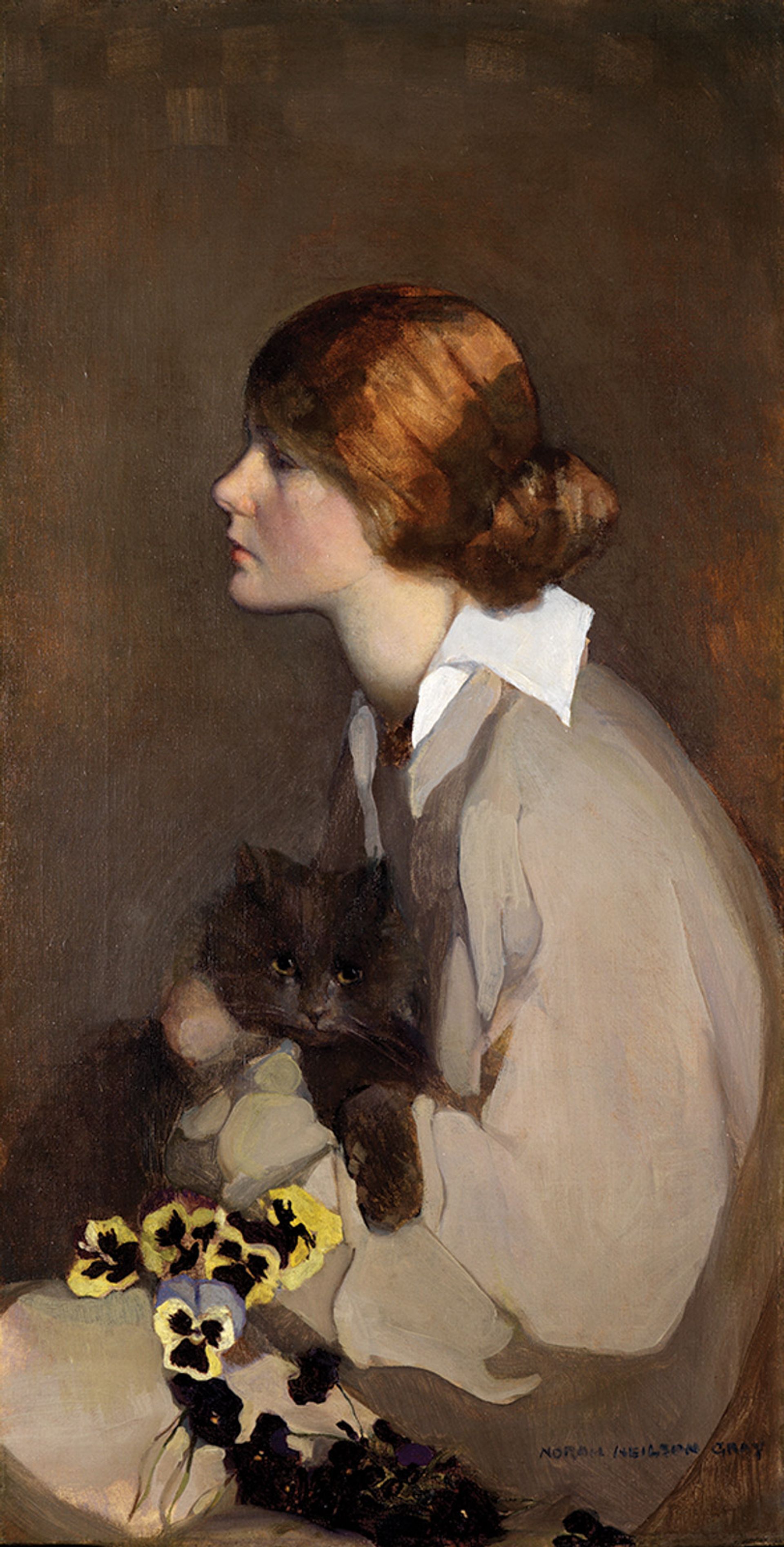
Norah Neilson Gray became the foremost painter of the so-called “Glasgow Girls”, a circle of influential Art Nouveau artists and designers who flourished in the city at the turn of the last century and pioneered a distinctive Scottish style. She later became a teacher at the Glasgow School of Art, where she was known to her students as “Purple Patch” because of her assertion that there is colour in shadow and darkness. The model in this painting is likely one of the artist’s sisters, but the real star of the show is the cat in her arms, whose bright yellow eyes—offset, of course, by charcoal fur with the occasional slight purple tint—are the work’s namesake. The piece is available from The Maas Gallery, priced €85,000. Norah Neilson Gray’s Golden Eyes (1917). Courtesy of Artmedia Press. For sale with the Maas Gallery
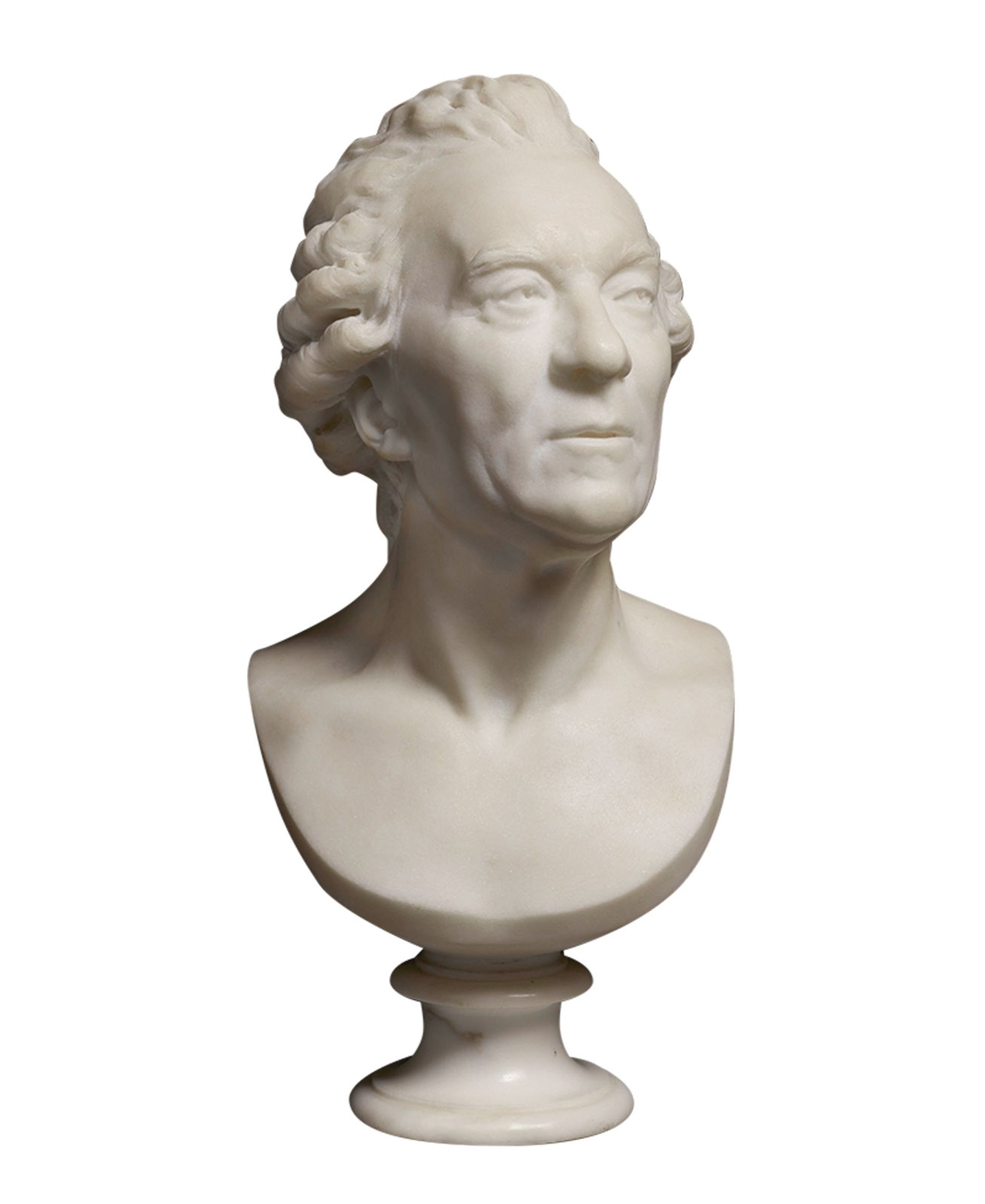
A familiar name for botany enthusiasts and dix-huitièmistes, Louis Leclerc, Comte de Buffon (1707-88) was appointed the head of King Louis XV’s garden in 1739 and went on to make his mark with his 36-volume European bestseller, Histoire Naturelle. He was a contemporary of Jean Antoine Houdon (1741-1828), who was famous for his Neo-Classicising portrait busts of the most famous men and women of the period in France and elsewhere. Despite Houdon’s connections to the ancien régime, he escaped the guillotine and came back into favour. Portrait busts had many uses—to signal one’s heroes or to stand on top of bookcases to indicate the location of authors’ books below. The price is available on request from Daniel Katz Gallery. Jean Antoine Houdon’s Bust of Georges-Louis Leclerc, Comte de Buffon (1788). For sale with Daniel Katz Gallery
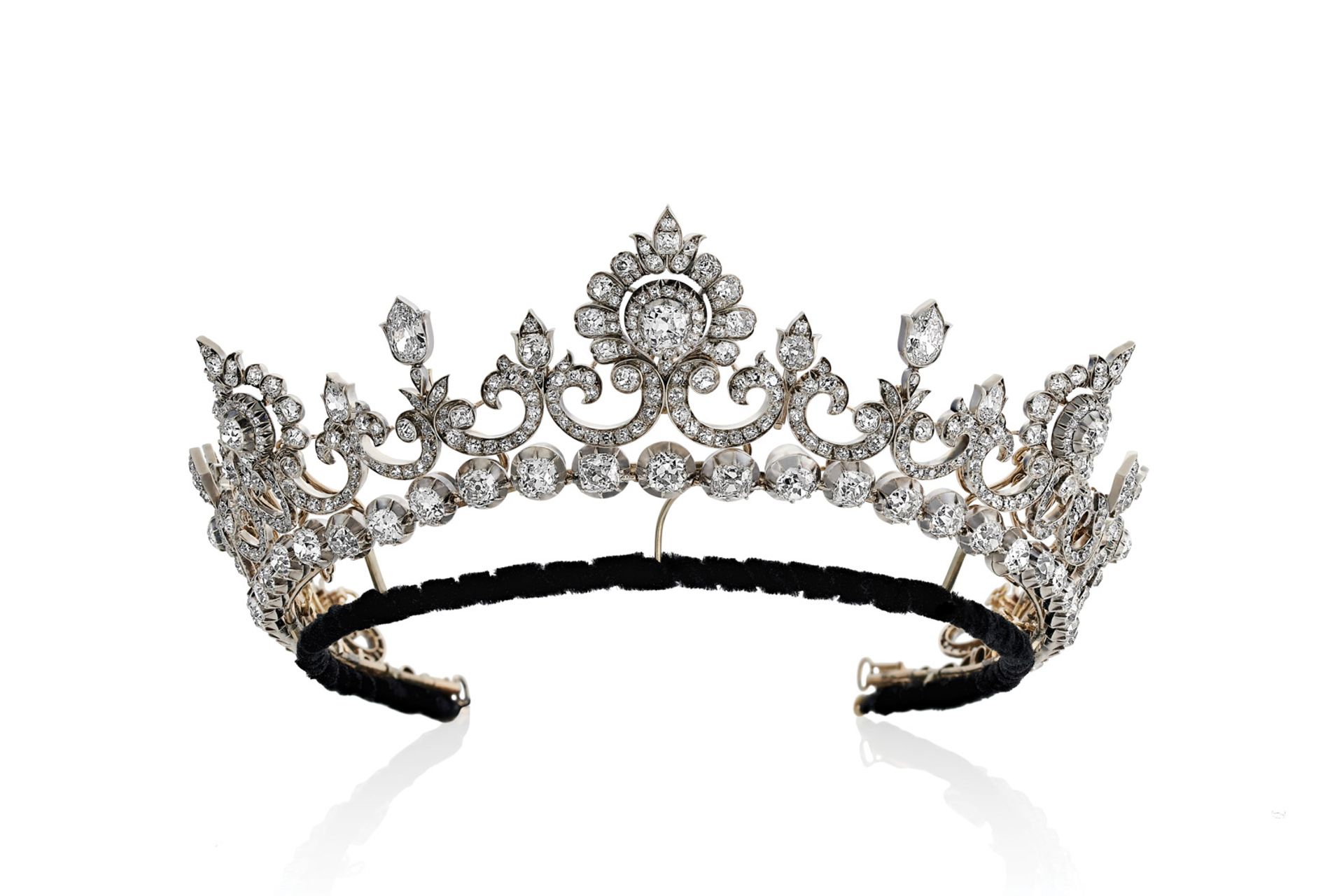
Marilyn Monroe may have popularised the phrase “diamonds are a girl’s best friend”, but it was the “Dancing” 5th Marquess of Anglesey, Henry Cyril Paget, who pioneered the lifestyle. The colourful if controversial British aristocrat—known as Toppy—squandered his inheritance on sparkling jewels, outlandish fashions and flamboyant theatre productions of his own making, running up debts equivalent to £60m before his death in 1905. His wardrobe and jewels were sold in 1904 to pay creditors, with the jewels alone realising £80,000. Yet this 100-carat diamond tiara, no doubt worn by Toppy in his theatre skits (and perchance the odd Tuesday afternoon, just for kicks), until recently remained in the family; Cecil Beaton photographed the 6th Marchioness of Anglesey, Lady Marjorie, wearing it at King George VI’s coronation in 1937. It is priced at £500,000 to £1m, from Hancocks London. The Anglesey Tiara (around 1890). For sale with Hancocks London
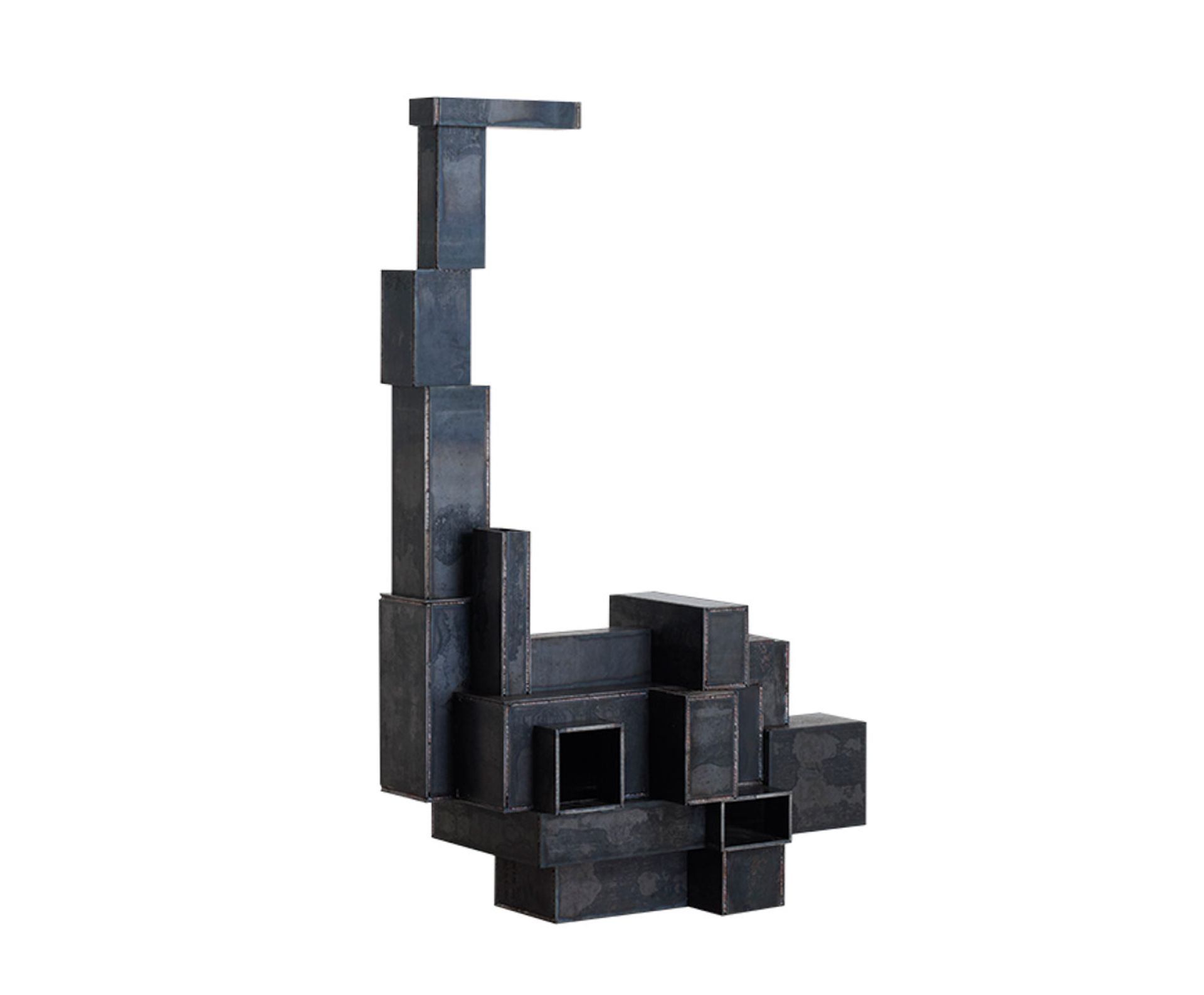
The gallery is making its Tefaf Maastricht debut in the fair’s Modern section with a solo stand of work by the UK sculptor Antony Gormley. This particular piece is from the Turner Prize winner’s Blockworks series, in which corten steel blocks are arranged to mimic human postures such as kneeling, crouching or standing. According to the gallery, “the use of rectilinear units refers both to the idea of pixelation of the human form, but also to the rooms and buildings of our architectural habitat”. The price is available on request. Antony Gormley’s Stretch (2012). Courtesy of the artist. Photo © Stephen White. For sale with Galleria Continua
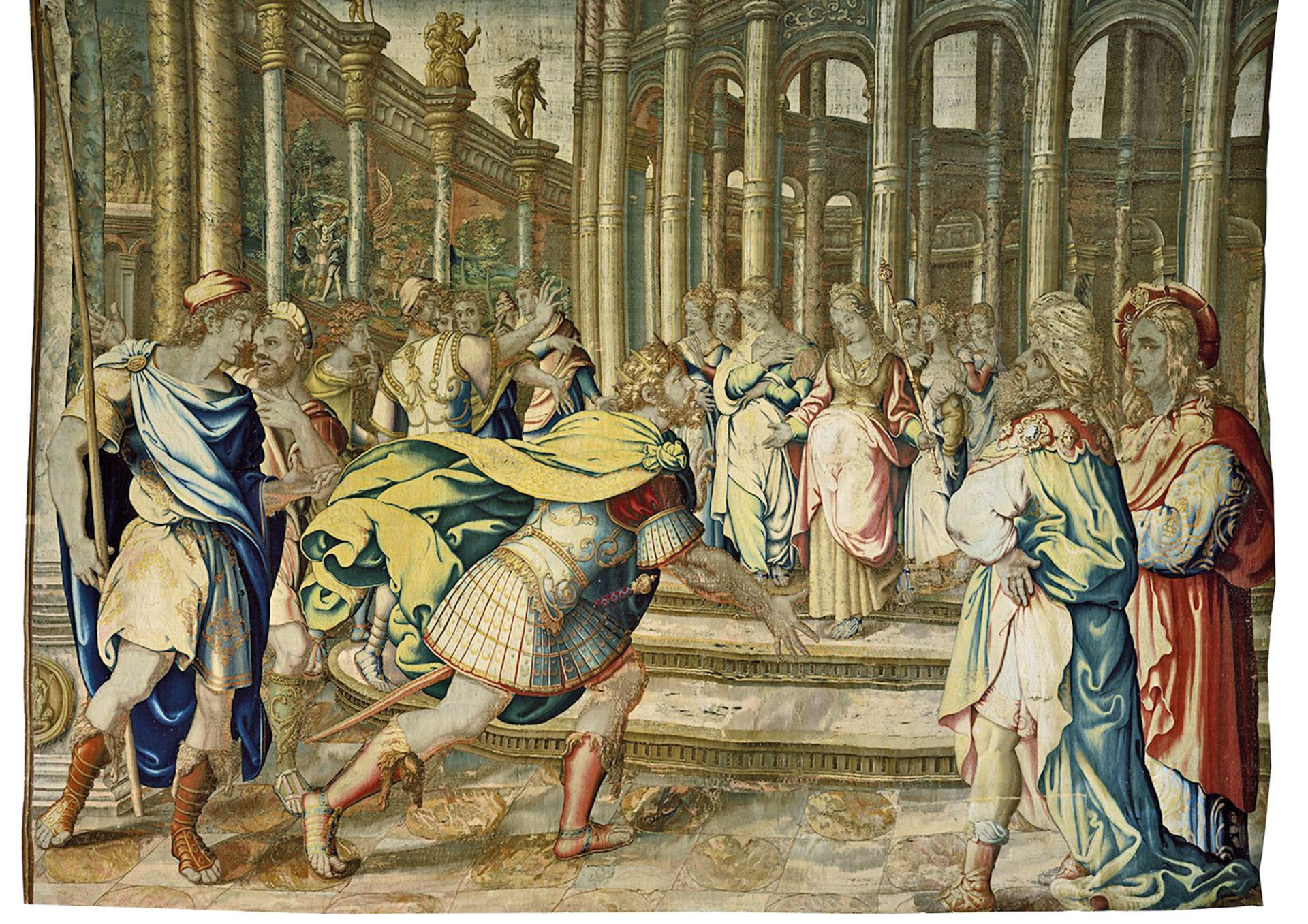
This tapestry was made from a design by Perino del Vaga, who had been in Raphael’s workshop and became a highly sought-after decorative painter in the latter half of the 16th century. He was employed by the Genoese prince Andrea I Doria (1466-1560) to design and decorate his palace outside Genoa. To live up to his noble status, Doria acquired some 200 tapestries—the sine qua non of super-luxury goods—including a six-piece set designed by Perino on the stories of Aeneas. The cartoons made their way to other weavers, despite Doria’s desperate attempts to exert exclusive rights to them. This tapestry is unusual in having been woven in England at the Mortlake tapestry manufactory, which was set up by King Charles I who, like Doria, felt the need to underline his magnificence. Mortlake tapestries are relatively rare as the king’s property was dispersed, destroyed or lost after his execution and the manufactory was effectively finished off at his death. This piece has the additional lustre of having come from the Bavarian Schloss Neidstein, recently the home of the US film star, Nicolas Cage. Since Neidstein’s last descendent-owner died in 2004, the castle’s contents have been gradually sold off, hence this tapestry’s immediate provenance. Its asking price at S Franses is £1m. Perino del Vaga’s Dido Welcoming Aeneas (1643). For sale with S. Franses
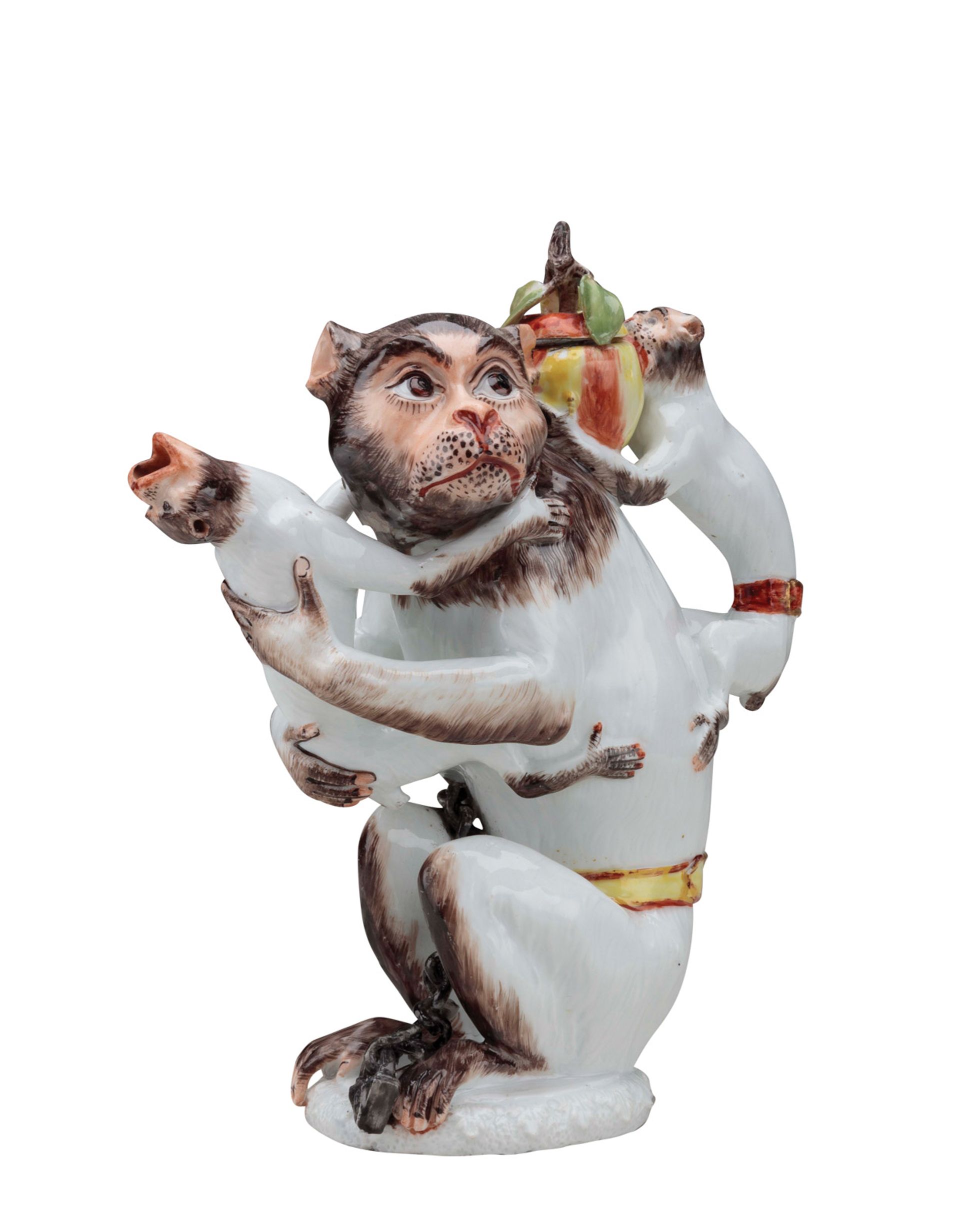
The Elector of Saxony, Augustus the Strong, set up the Meissen manufactory in 1710, and much of its success was down to its most famous modeller, Johann Joachim Kändler (1706-75), who specialised in animals and small figurines. This teapot is a good example of a typical Rococo joke, singerie —monkey themes that obliquely poked fun at human beings as well as entertained them. Michele Beiny Gallery is asking $90,000 for the piece. Johann Joachim Kändler’s Monkey Teapot (1735). For sale with Michele Beiny
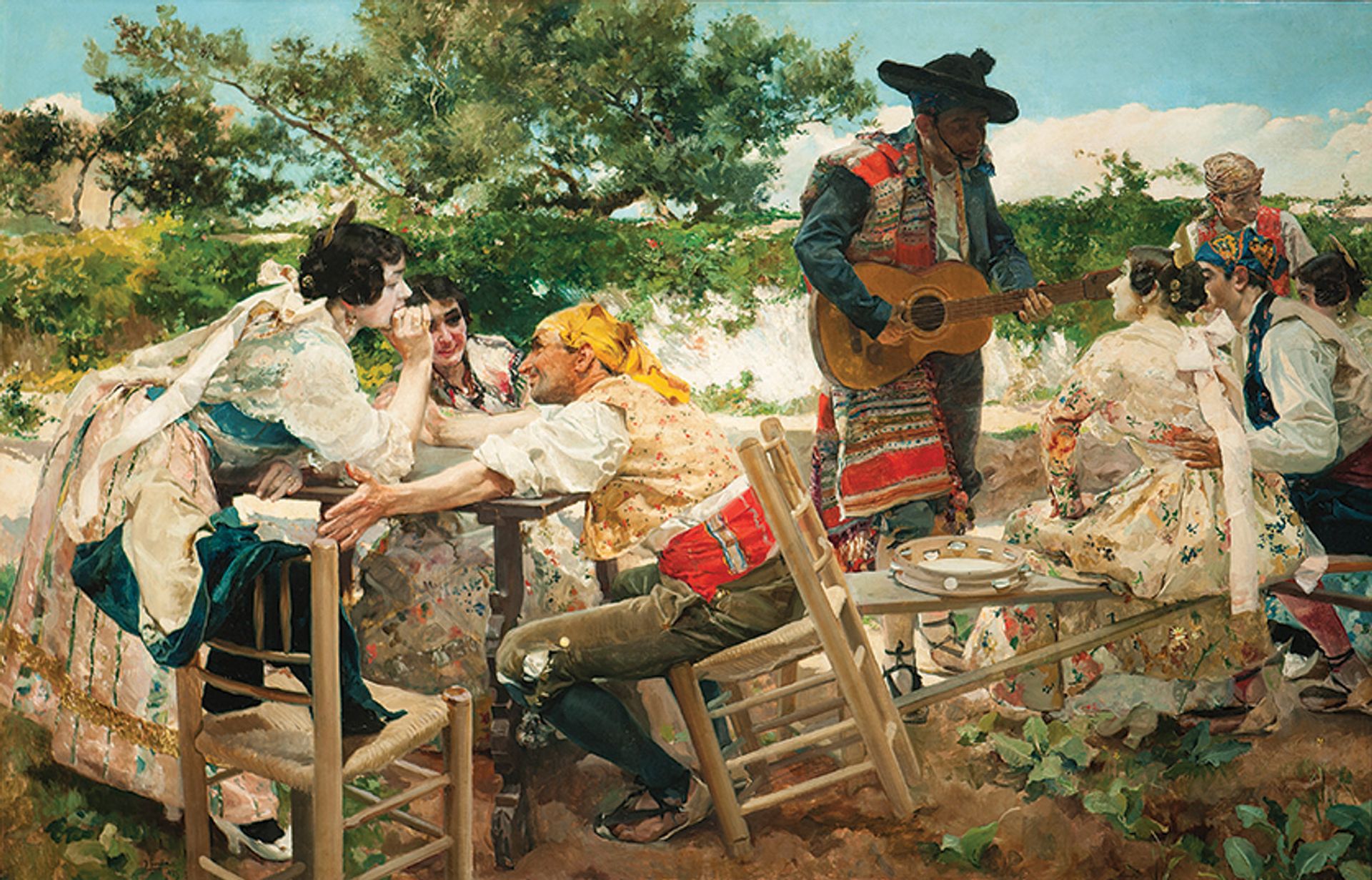
The Spanish artist Joaquín Sorolla produced this salubrious painting in a milestone year, when he travelled to Paris and began to hone his reputation as the “master of light”, as Claude Monet once described him. The work “has an airtight provenance”, says the Madrid-based dealer Diego López de Aragón, “and has been part of the finest Spanish art collections”, including that of Juan March Ordinas (1880-1962), the billionaire who founded the Juan March Foundation. It has been held in a private Spanish collection since 1984 and was authenticated by the artist’s great-granddaughter and prime researcher, Blanca Pons-Sorolla, who will include it in the artist’s forthcoming catalogue raisonné. Sotheby’s London set a record for Sorolla in 2003 with a beach scene—the artist’s most popular subject—called La hora del baño (1904) that made £3.8m (est. £3m-£4m). This picture is on offer for £2.3m at López de Aragón. Joaquín Sorolla’s Valencian Fiesta (1893). For sale with López de Aragón
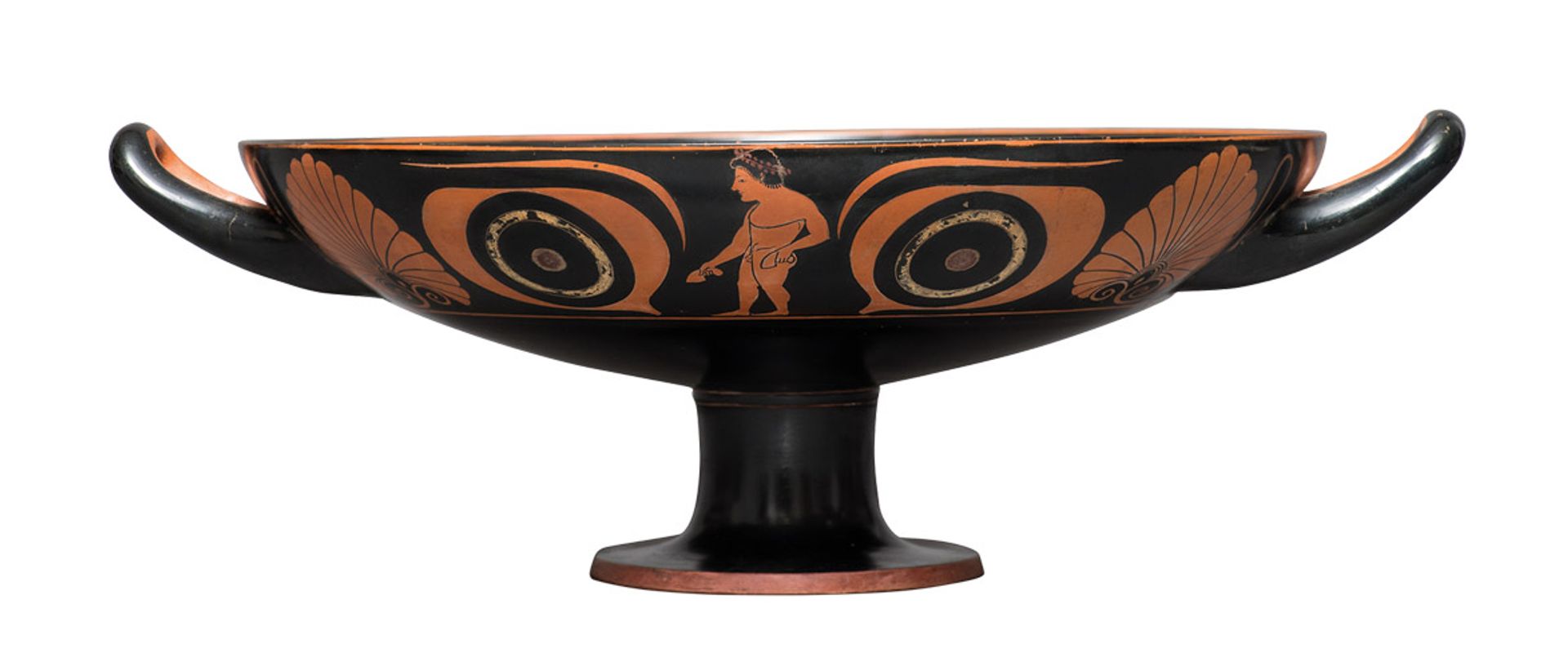
Greek terracotta cup (around 530BC), Charles Ede: the decoration of this 2,500-year-old kylix—or wide-brimmed cup—is what makes it particularly rare. It combines two techniques: black-figure painting, a discipline that dates back to 700BC, and the later red-figure method that was invented around the time this cup was made and allowed for greater detail to be painted on top of the design. The side decoration depicts red-figure nude athletes set between two protective eye motifs. The centre of the cup shows a black-figure nude satyr carrying an animal skin full of wine in one hand and a horn-shaped cup in the other. Two words are also inscribed on the shallow vessel: “Cha[i]re” and “Kalos”—the first is a greeting and the second means “the boy is beautiful”. The phrase “could be interpreted as a gay pick-up line”, the gallery suggests. Charles Ede Gallery has priced the vessel at £80,000. Greek terracotta cup (around 530BC). For sale with Charles Ede Gallery
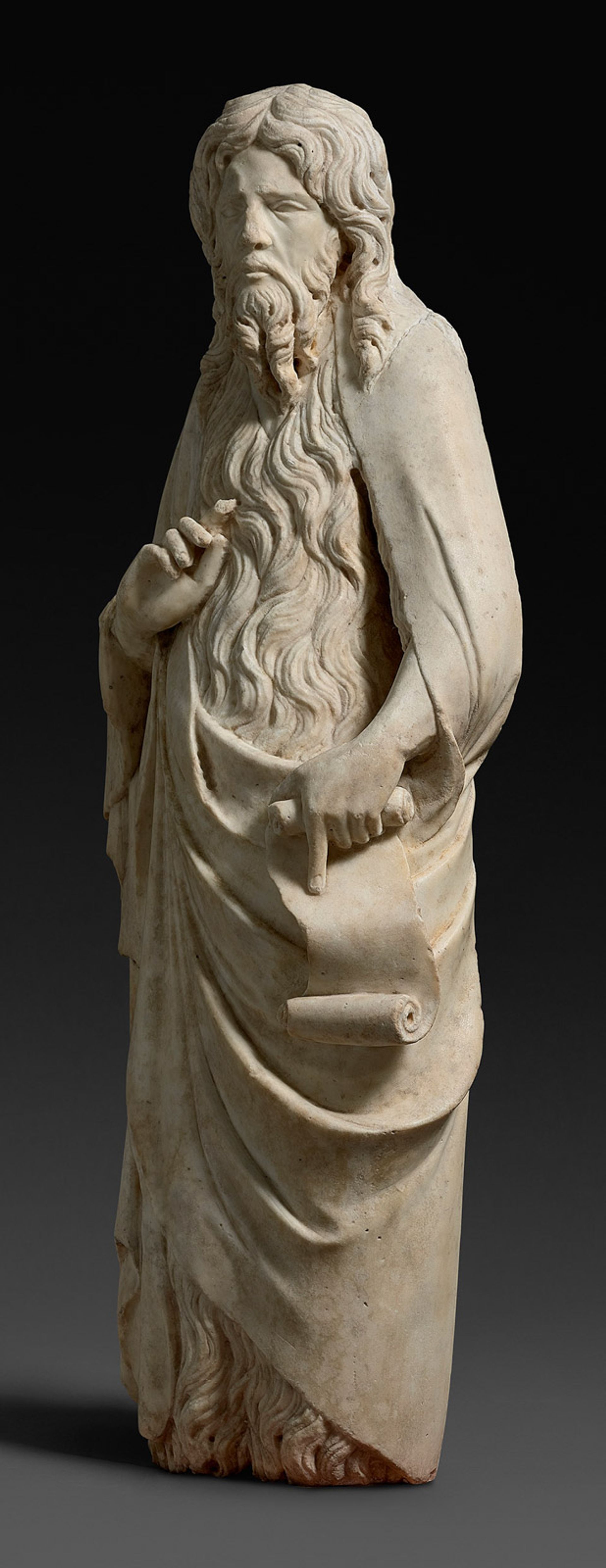
This late-Gothic marble depiction of Saint John the Baptist (around 1350-60) is, Stuart Lochhead says, a new discovery by the Tuscan sculptor Nino Pisano, the son of Andrea Pisano. In a 2005 article, the piece was described by the Italian Renaissance scholar Francesco Caglioti as a “splendid St John the Baptist” by the artist, unpublished and in a private collection outside of Italy. This sculpture was the basis for the figure of St John in the marble polyptych (late 1360s or early 1370s) by Nino’s brother Tommaso in the Basilica of San Francesco, Pisa. The back is only roughed out, suggesting it was meant to sit in a niche, and Lochhead thinks it is likely it “came from a similar polyptych in the Pisa area, the other components of which are either lost or unidentified”. Stuart Lochhead Sculpture has priced this piece at $2.5m. Nino Pisano’s St John the Baptist (around 1350-60). For sale with Stuart Lochhead Sculpture
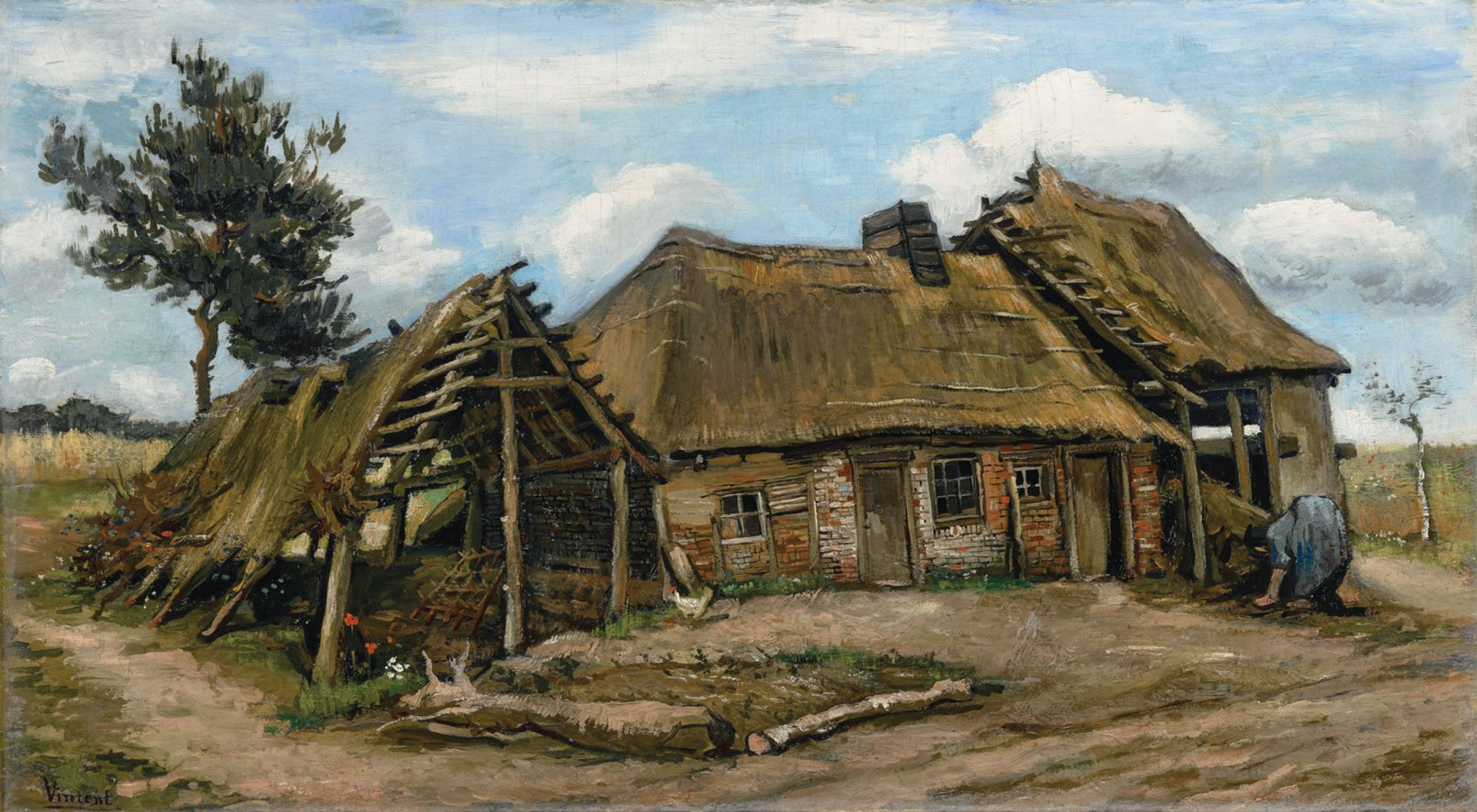
This Van Gogh landscape, which once sold for £4 in a farm sale in England, is to be unveiled at Tefaf Maastricht by the London dealer Dickinson. Peasant Woman in Front of a Farmhouse comes from an American collector, who acquired it at Sotheby’s in 2001, when it went for $1.7m. In 1967 it had appeared in a farm auction along with agricultural equipment, unrecognised as a picture by Van Gogh. A year later it turned up in a junk shop in Belsize Park, north London, where it sold for £45. Soon afterwards it was authenticated as a Van Gogh, painted in Nuenen in July 1885. The price is available on request. Vincent van Gogh’s Peasant Woman in Front of a Farmhouse (1885). For sale with Dickinson Gallery
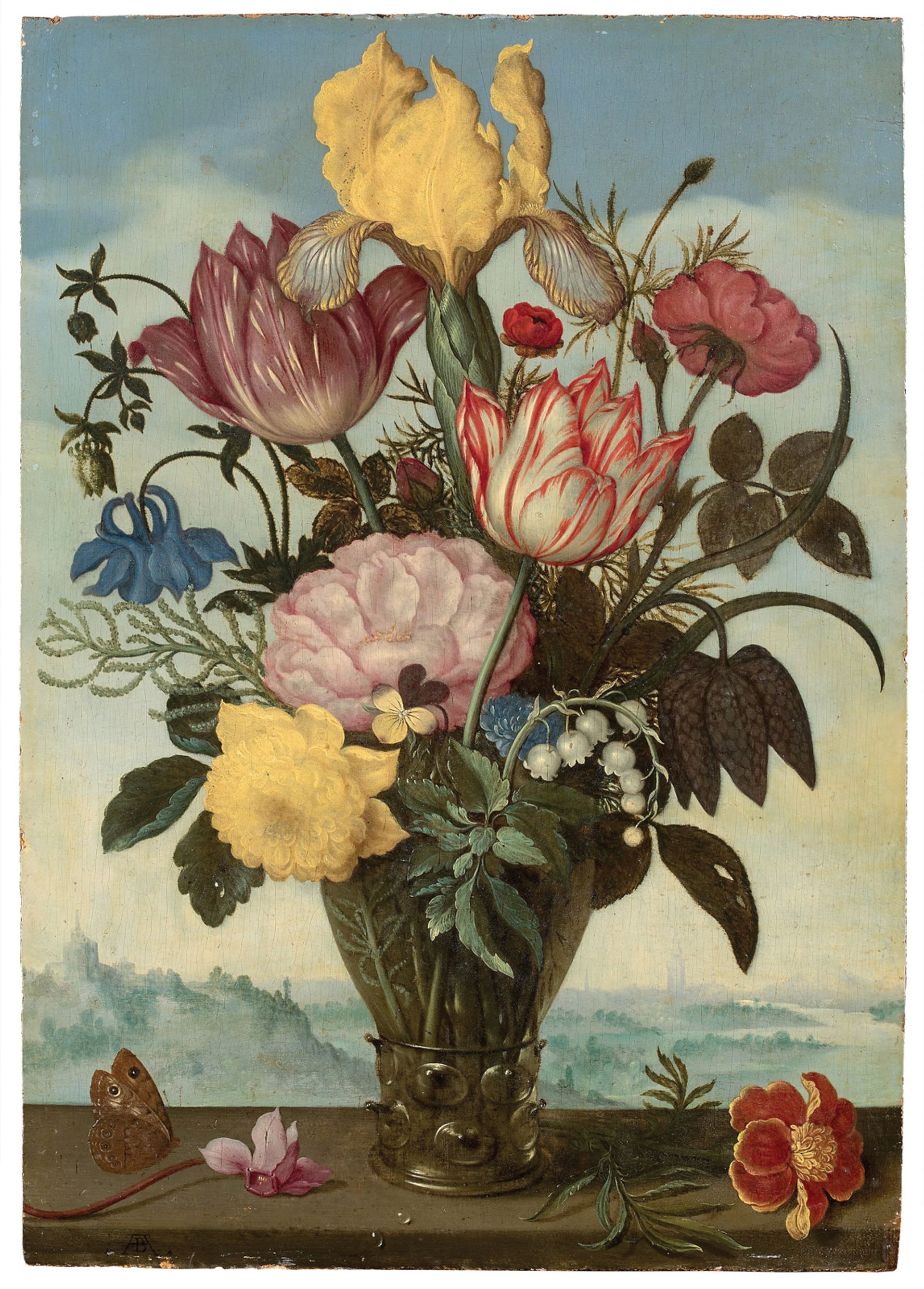
Ambrosius Bosschaert the Elder (1573-1621) was an eminent flower painter of the first generation, whose expertise derived from Renaissance botanical illustration and adaptations of details in altarpieces, the demand for which evaporated in the Reformation. The German art historian Aby Warburg’s remark that “god is in the details” is pertinent here: Bosschaert’s godlike qualities lie in his trompe l’oeil rendering of the römer (a glass popular in the 17th century), with its teasing water reflections and meticulously observed flowers. The composition is typical of the early phase of flower painting—stiff and vertical, with each flower placed discretely. The inclusion of the perspectival background became a commonplace of flower paintings later in the century. Price on request. Ambrosius Bosschaert the Elder’s Bouquet of Flowers in a Römer Glass Placed on a Table with a Landscape in the Background (around 1619-21). For sale with De Jonckheere
Norah Neilson Gray became the foremost painter of the so-called “Glasgow Girls”, a circle of influential Art Nouveau artists and designers who flourished in the city at the turn of the last century and pioneered a distinctive Scottish style. She later became a teacher at the Glasgow School of Art, where she was known to her students as “Purple Patch” because of her assertion that there is colour in shadow and darkness. The model in this painting is likely one of the artist’s sisters, but the real star of the show is the cat in her arms, whose bright yellow eyes—offset, of course, by charcoal fur with the occasional slight purple tint—are the work’s namesake. The piece is available from The Maas Gallery, priced €85,000. Norah Neilson Gray’s Golden Eyes (1917). Courtesy of Artmedia Press. For sale with the Maas Gallery
The Tefaf Maastricht wish list: what to buy at this year's fair
A dazzling diamond tiara, a Rococo monkey teapot, a Van Gogh rescued from a farm sale and a saucy Greek vessel are among the highlights on the stands
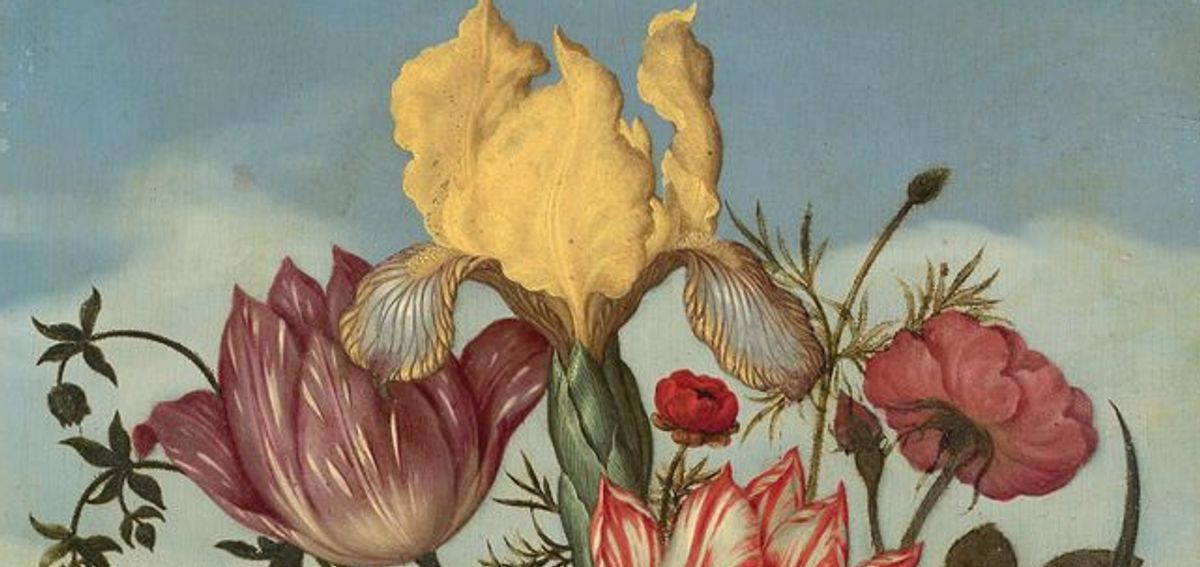
Ambrosius Bosschaert the Elder’s Bouquet of Flowers in a Römer Glass Placed on a Table with a Landscape in the Background (around 1619-21). Courtesy of De Jonckheere Ambrosius Bosschaert the Elder’s Bouquet of Flowers in a Römer Glass Placed on a Table with a Landscape in the Background (around 1619-21). Courtesy of De Jonckheere

